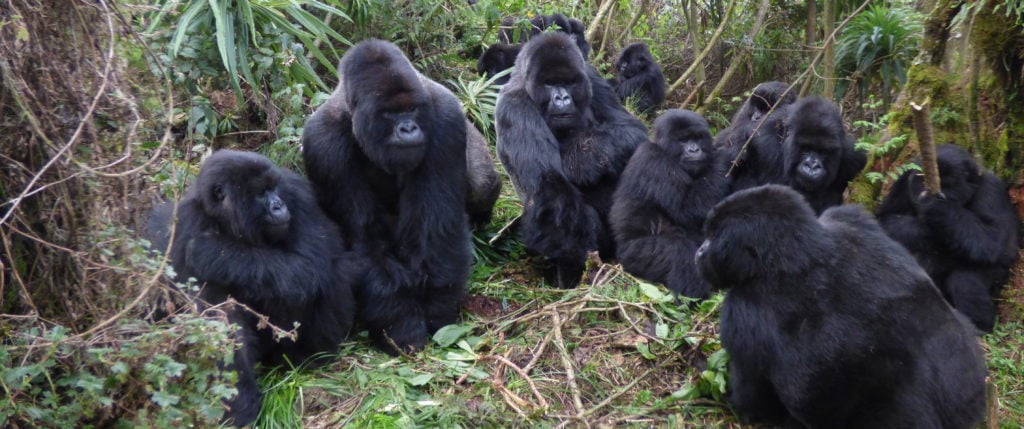
Fact 1: Grauer’s gorillas are endemic to the Democratic Republic of Congo.
Unlike mountain gorillas, which are found in three countries (DR Congo, Rwanda and Uganda) Grauer’s gorillas are found only in eastern Democratic Republic of Congo. Due to decades of civil unrest in Congo, this area has historically been difficult to access by researchers, and not much is known about Grauer’s gorillas.
Fact 2: Grauer’s gorillas used to be called eastern lowland gorillas.
However, their name was changed to better reflect the range of habitats in which they are found. While the majority of Grauer’s gorillas do live in lowland forests at altitudes as low as 600m, their range extends up to 2900 meters. This overlaps with altitudes where mountain gorillas are found and explains why lowland gorilla was not an accurate name.
Fact 3: Grauer’s are the most at risk of the four gorilla subspecies.
Only roughly 3,500 Grauer’s gorillas remain and even more frightening is that scientists estimate their numbers have declined by close to 80% over the last twenty-five years. By comparison, there are 1,000 mountain gorillas but their numbers have been slowly but steadily increasing since the late 1980s. And so, it is this rapid rate of decline, combined with a relatively small number that makes Grauer’s gorillas so at risk. The primary reason is poaching, which has flourished during a long period of civil unrest in the region and illegal mining for components used in small electronics like cell phones.
Fact 4: The Fossey Fund began protecting Grauer’s in 2001.
After more than 30 years protecting mountain gorillas in Rwanda, the Fossey Fund began to look at expanding. Grauer’s gorillas were, and still are, very much in need of help because the majority of them do not live in national parks and so have no formal protection. Thus, in 2001 the Fossey Fund began working to protect Grauer’s gorillas and in 2012 partnered with local communities to protect their forests through establishing the Nkuba Conservation Area. Named after Nkuba village, it started as 700 sq km and over time has expanded to now be 1,300 sq km (which is almost eight times the size of all the mountain gorilla habitat in Rwanda!) and hold an estimated 200 Grauer’s gorillas. And just like in Rwanda, our work there focuses on protection, science, and working to improve the lives of local community members, many of whom were former hunters and are now our employees. “We inherited these forests from our ancestors and must protect them for the future”, says a former hunter, now a tracker.
Fact 5: How we study Grauer’s gorillas is very different from how we study mountain gorillas.
The Grauer’s gorillas in Nkuba Conservation area are not habituated to humans, which means the ways we research and protect these groups are very different from our protocols with the mountain gorillas. Fossey Fund trackers follow them at one day’s distance, using nest sites, food remains, footprints and other methods to detect their presence, numbers, travel paths, diets and other important information.
Sign up for the latest gorilla news and updates!







